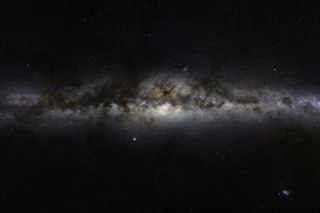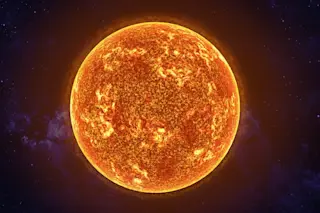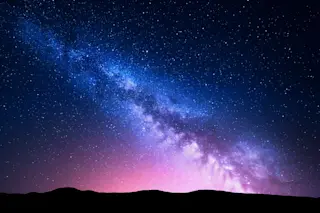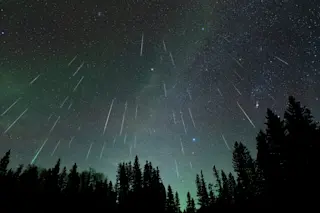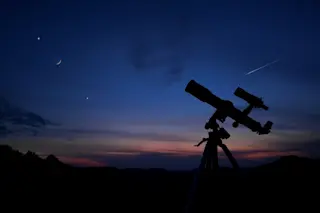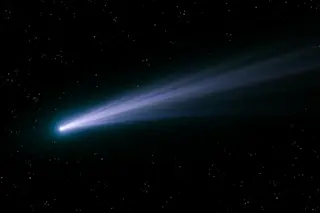In September the European Southern Observatory released one of the most spectacular views ever created of our home galaxy (top image). This edge-on perspective offers a good view of what the Milky Way would look like from the outside because in a sense we are on the outside: Our solar system resides in one of the peripheral outer arms of our flattened spiral galaxy.
The central bulge is packed tight with old red stars and an invisible black hole some 4 million times as massive as the sun. Thick clouds of gas and dust create the spidery dark markings. Two of the Milky Way’s satellite galaxies, the Large and Small Magellanic Clouds, appear toward the bottom right. The 800-megapixel image comprises nearly 1,200 photos, but no high-powered telescopes were involved—just the dark, clear skies of the Chilean desert and Canary Islands and a Nikon D3 digital camera.

In a separate view zooming in on the galactic center (bottom image), a giant black hole at theBeau Milky Way’s core (white area at center) gobbles up matter and spews X-rays. Nearby, large stars erupt in cataclysmic supernova explosions, sparking additional emissions from gas heated to millions of degrees. This image, captured by the Chandra X-ray Observatory, shows X-rays ranging from relatively low (red) to high (blue) energy.


